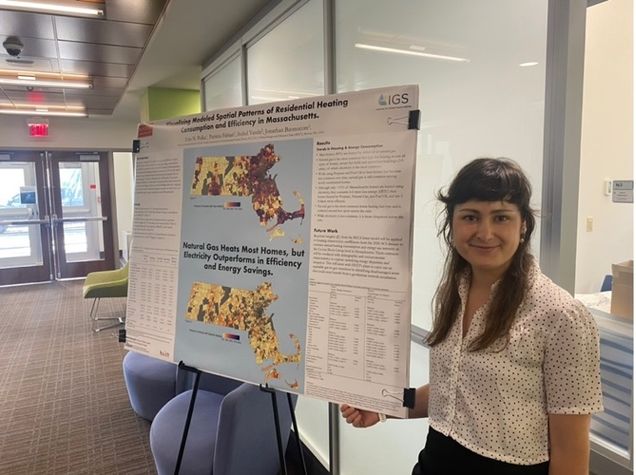Modeling Patterns of Residential Heating Consumption in Massachusetts
Project Partner: HEET, Summer 2024
Project Summary: Massachusetts climate goals aim to achieve net-zero building emissions by 2050. Buildings contribute almost one-third of total greenhouse gas emissions, more than any other economic sector. Achieving these climate goals will require us to transition away from using fossil fuels and towards more clean and efficient power generation. Ground source heating technologies can help lower energy costs and reduce carbon emissions by using the stable temperatures underground to heat and cool buildings, making them the most energy-efficient technology for temperature control.
In the summer of 2024, Erin worked with a local nonprofit, HEET, to identify which Massachusetts neighborhoods would be best suited for geothermal energy deployment. She used data from the Residential Energy Consumption Survey to predict energy use for heating in Massachusetts homes. Models like these can help us identify housing characteristics that are linked to higher energy costs, enabling targeted improvements.
Results from Erin’s model found that the number of household members, home ownership, size of the home, decade constructed, household income, and fuel heating type were the most important variables for predicting energy heating consumption among Massachusetts homes. These results can help HEET and the State to prioritize neighborhoods for geothermal installations and help direct utilities where to invest geothermal technologies.
Project Deliverables:
- Development of two predictive models (one random forest model and one linear regression model) used to measure the association between energy heating consumption and housing characteristics
- Presentation of findings at HEET quarterly meeting and BU Institute for Global Sustainability poster seminar
- Written article for HEET’s quarterly newsletter

Watch Erin’s URBAN Internship lightning talk here.
